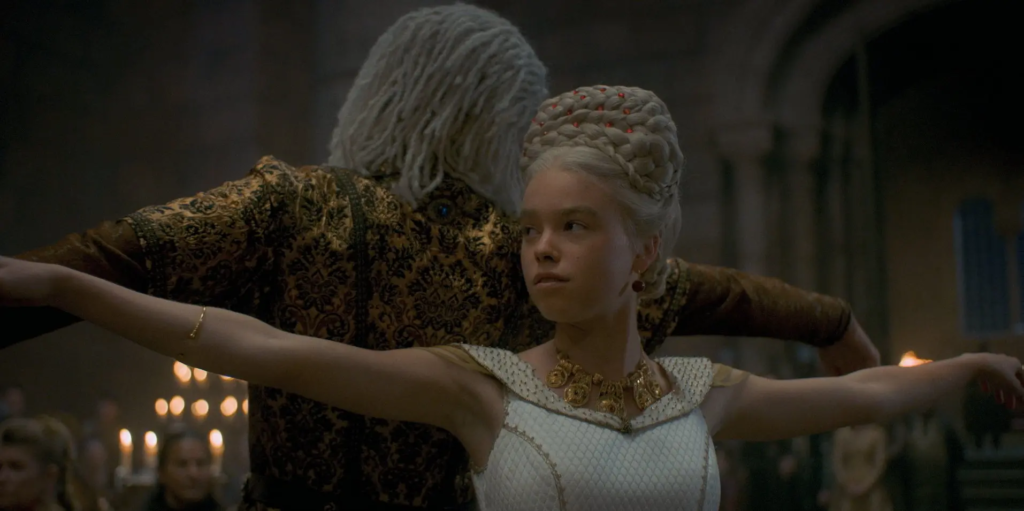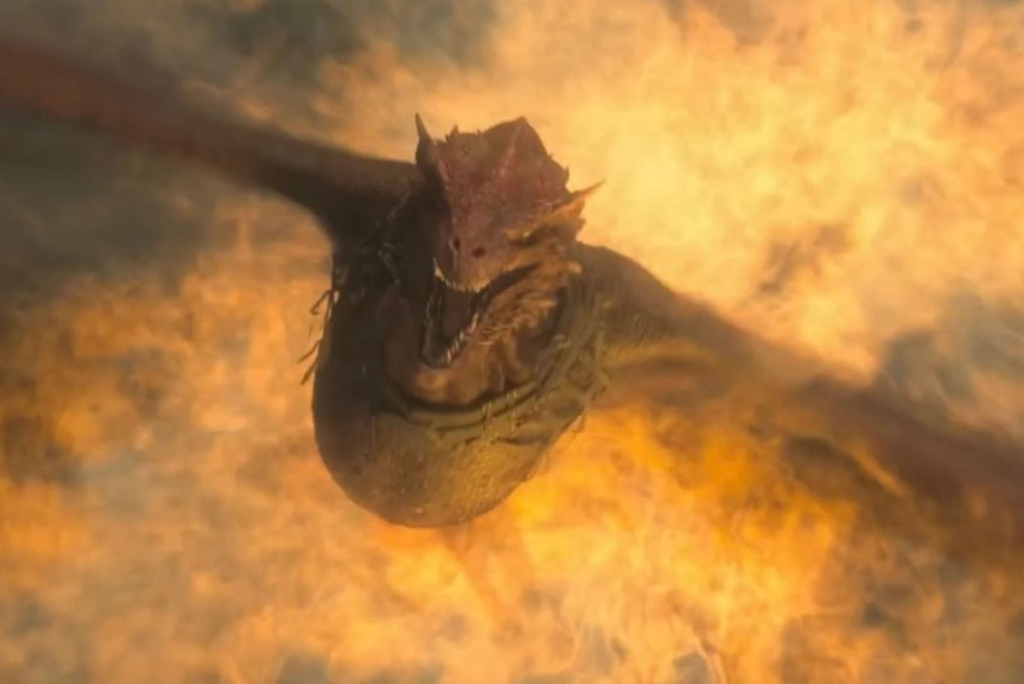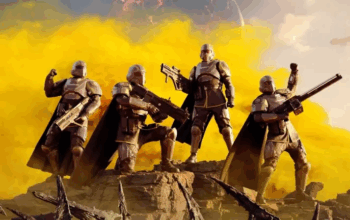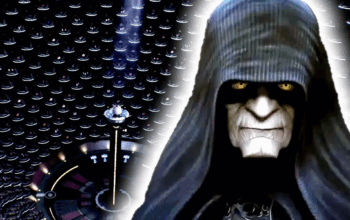In the three years since the series finale of Game of Thrones, the series had largely fallen from grace as one of the best shows of all time to one of the most despised endings in television history.

The franchise ended with the Star Wars IX: Rise of Skywalker-levels of hatred because of several ill-conceived writing decisions that destroyed or distorted entire characters and storylines. This has bitterly tarnished GOT’s integrity as the moral Complex characters have either been turned into caricatures of their former selves. Because of this ending, many people have been very disinterested in future projects that have been proposed and over time talk of the series has become less and less popular.
This, however, did not deter HBO from milking its most popular franchise. There are currently several other projects in development, including a scrapped filmed pilot. This has led to doubt that HBO’s jewel can regain that popularity. Fortunately, the new showrunners, Miguel Sapochnik and Ryan Condal, returned to create a new experience and take the franchise back to its roots.

Ever since George R. R. Martin teased The Dance of Dragons in his A Song of Ice and Fire novels, I knew this was a story that warranted its own series. This was when the Targaryen rulers were at the height of their power, in both splendor and number of dragons. As the opening narration states, the only threat to the Targaryen dynasty was itself.
Setting

Season one largely encompasses the Rouge Prince portion of the Fire and Blood novel. Set 170 years before the events of the original series, none of the characters have been born yet allowing new characters to take the spotlight. At the center of it all is the growing succession war between Princess Rhaenyra and rivalry with her former friend-turned-stepmother, Alicent Hightower, and their sons.
Compared to GOT’s 1st season, HOTD is a much faster pace in terms of events depicted as this season encompasses nearly 20 years of backstory.
While the Targaryens are the main house at play there are several other factions at court with their own agendas. While the Starks, Lannisters, and Baratheons do exist, their influence at court is subverted by more ancient and powerful houses. in this case, the main houses at play the tug of war are the Hightowers and the Volaryons, and to a lesser extent, the Strongs.
Characters

Like the last series, HOTD has a large cast of complex characters. This is a show with no real heroes or villains but ambitious people looking to cement their power. There is no clearer case conflict between power and love Then with the complicated relationship between King Viserys and his brother Dameon.
King Viserys, First of His Name

Starting with King Viserys I, one of this season’s most unexpected highlights.
Upon reading the novels, I was given the impression that Viserys was a weak king that’s easily manipulated but is stubborn with the succession of his daughter. In the show, he’s not portrayed as weak in the sense he is meek or mentally insane. Instead, what we got was a grieving father who struggles with making the right choices choosing instead his small council to govern while building his model of Old Valyria.

In a way, Viserys is the Ned Stark of this first season, not just because he dies at the end, but because every plot point going forward was because of his decisions. And his biggest decision regarding the entire series was naming his firstborn daughter heir.
Despite his well well-intentioned nature, Viserys is far from morally perfect. Many would say his decision to name his daughter his heir and not his son is out of bitterness, but his flaws don’t stop there. Despite not wanting to marry a 12-year-old girl, he seems to have no qualms about remarrying someone the same age as his daughter. But easily, the most controversial moment was his decision to give his wife a fatal C-section without asking for his wife’s consent. Viserys clearly loved his wife, Aemma, but was obsessed with having a son at all costs. That choice would haunt him for the rest of his life. Throughout the series, he slowly falls apart literally, as his limbs and even his mind rot away from what appears to be leprousy.
One element added was Viserys obsession with prophecy along with his previous ancestors that relate to future events in GOT with the future Long Night or White Walkers. The Song of Ice and Fire Prophecy has been secretly based down since Aegon the Conqueror. This has led to mixed reactions from fans as we know it would lead to nothing at the end of GOT. However, it adds to why Viserys refused to change the act of succession despite having sons.
Viserys is a really hard character to pull off, and still makes him interesting. So much of that has to come from Paddy Considine‘s performance, capturing both his frustration and love for his family.
Daemon Targaryan – The Rogue Prince
Easily the most divisive character is the “Rouge Prince” himself, Daemon Targaryen.
In a way, Daemon is like Lion King‘s Scar and Thor‘s Loki if he had more sense. In many ways, he is most similar to Jaime Lannister. In any other genre, he would be the villain.
Despite his ambitions for power, he does retain a certain moral line with his family. He still covets his brother’s throne but has the sense never to betray Viserys directly. Daemon wanted not so much the throne but his brother’s approval to show that he is the true warrior king that Visarys Can never be.
Naturally, it’s Daemon’s relationship with his niece/wife that causes the most controversy, as it was very clear from the start that they have a “special relationship”. In their first scene together, Daemon has a way of wooing Renyra with his swagger. One touch that adds to their relationship is often in their conversations they speak high Valerian to each other as a kind of secret language. The Targaryons have always been an incestuous family, but its context has always been framed as taboo by the narrative. And yet we as an audience are intrigued by the chemistry between Matt Smith, Milly Alcock, and later Emma D’Arcy.

For most of the season, you often keep yourself on your seat to what he will do next. He can be calm and measured in one scene, only to literally beat the messenger in the next. But what ultimately defines his Daemon is the one thing he has in common with his brother, their love for their family. Despite all the animosity Daemon and Viserys have had over the years, they both love each other deep down, and this was no better demonstrated than in the throne room scene in episode 8. That scene with Dameon helping his frail rotting brother for me was the culmination of their relationship. No matter the animosity, they were brothers, something that doesn’t always get explored in a court drama.
Daemon is not a good person by any means you can’t help but be drawn to him.
Rhaenyra and Alicent – The Two Queens

Despite the domination of these male characters in the story, the true focus is their female leads.
I commend that they found the perfect actors who fit both teenage and adult Ranyra and Alicent, particularly the younger actresses Milly Alcock and Emily Carey. They look just like versions of Emma D’Arcy and Olivia Cooke. The younger actresses completely steel the first half of the season, making it hard to say goodbye with that big-time jump. One thing that Game of Thrones never fails at is its casting.
The biggest drama lies around the fractured relationship between Princess Rhaenyra Targaryen and her best friend-turned-stepmother, Queen Alicent Hightower. One of the major changes in the books is having both girls appear to be the same age, while in the book Alicent was roughly a decade older the Rhaenyra. In my opinion, the reason for this change was that the filmmakers wanted an easier way to emphasize that they were once close friends before circumstances turned them into bitter rivals.
Rhaenyra Targaryen – The Black Queen
Rhaenyra is a character that has had an enormous amount of pressure put on her. For a time, being an only child, she spent most of her spare time flying and playing guessing games. As her father grooms her for the thrown, she realizes the responsibility of being the future heir.

Her main flaw was her pursuit of “personal pleasure” which jeopardizes her claim. Her fling with Criston Cole disrespected his vow as a celibate knight. Later starting one with Harwin Strong resulting in “3 strong boys”. Her promiscuity has made drawn much ire at court, with only the king’s willful blindness protecting her.

This doesn’t stop Rheanyra from proving to her father and herself that she is worthy of being Viserys’ heir. From convincing Dameon to give up the egg to persuading her father to dismiss Otto. Both actresses for Reanyra gave their characters depth, flaws, and personalities that make you feel very attached to both of them to the point where it’s hard to say goodbye to Milly Alcock.

Alicent Hightower – The Green Queen
As for Alicent, they put a very different take on what she is portrayed in the book.
Many have compared her to Cersei, but she’s more of Catlin Stark, where one’s devotion, duty, and “decency” surpass all sense of morality. She tries early on to support her friend but is constantly egged on by her ambitious father. She may have never loved her husband but tries everything she can to make this family work. It is notable early on how she picks her fingers when in uncomfortable situations, a sign of stress trying to please her father, husband, and former best friend.

At first, Alicent doesn’t want her son to challenge her friend’s claim. However, pressure from her father and noticing Rheanyra lying around causes her to think otherwise. Otto’s last word of advice is that Rhaenyra will ensure her succession is secured, meaning the execution of her children she relents and starts to take charge of herself for her children. When she wears the green dress, the war colors of her house, that Alicent is no longer going to be played by those around her.
By the time she has grown older, Alicent has become more cold and bitter. The emotional abuse Otto has pushed on Alicent has begun to pass on in a more aggressive form to her children, especially her planned heir Aegon.
Like Emma D’Arcy as older Rheanyra, Olivia Cooke also fits into the older Alicent well. My only nitpick with Olivia is that she is still a little too young to play Alicent in the late stage, especially in the last few episodes when her kids appear to be the same age.
The Children
As the Dance of the Dragons is a battle between 2 generations, considerable focus is given to Alicent and Rhenyra’s children during the time skip.
Aemond “One Eye”
The most developed of these “meddling kids” is prince Aemond. I appreciate that the showrunners gave ten-year-old Aemond something of a sympathetic side, being bullied a lot by both his older brother and his Nephew (technically). You feel bad that he is the only one of the kids without a dragon. Eventually, his dreams were filled when he was able to tame legendary Vhagar, and you begin to root for Aemond when he begins to fly. However, this is the origin of a school bully that has no doubt been amplified because of the loss of his eye.
By the end, Aemond becomes a reflection of his rival/idol Uncle Daemon being cocky, leading to perhaps the most infamous line, “let us drain our cups to these 3 Strong boys”. Curiously, in the finale, Aemond uses his dragon Vhagar to taunt Lucarys, who took his eye, but when he loses control of Vhagar, he slowly begins to have regrets, something he hadn’t had for years.
Aegon II
As for Prince/now king Aegon, many have compared him to Joffery, but several key differences give him much more depth. He is portrayed as spoiled and perverse, more interested in personal pleasure. Despite his constant rejection, he is constantly pressured by his mother to be the heir. Given that Visarys likely keeps sidelining Aegon throughout his youth, he was never properly groomed to the throne despite being the firstborn son.
At his core, Aegon is a deprived son looking for ways out of his misery. Alicent never gave Aegon the love and support that he truly needed to be a proper prince. The emotional abuse his mother puts him through causes him to lash out his anger at his female servants in more ways than one. This is the key difference between Aegon and Joffery, he is not interested in being king or welding power as he himself knows he’s not suited for the role.
That begins to change with his rushed coronation, a bruised Aegon just goes with the motions. Upon being crowned, he begins to see love and adulation that he has never had before and begins to embrace it; it almost reminds me of the emperor Commodus in Gladiator. All this time, he never wanted power or the thrown he just wanted love.
The “Strong” Boys
As for Rhaenyras “Strong Boys,” there isn’t much to say other than it’s clear they’re not the product of her husband, Leanor Volaryon. I do, however, like that their true parentage is treated as an open secret to all except the king himself. It is that flaw on Rhaenyra’s part that would spell doom for the Targaryen dynasty.
The Dragons

One of the big selling points for the series for me is the presence of not one but several dragons appearing. The dragons in HOTD are clearly distinct, with different colors this time and crests, scales, and even sounds.
The most distinct of these dragons is Dameon’s mount Caraxus. Nicknamed “The Blood Wyrm” in the books, its red menace exhibits an unusually slender appearance, almost resembling a smaller version of Smaug from the Hobbit films. Rhenyra’s Dragon Syrax exhibits less fierce features and clearly one that can pass for a Girl dragon and is a perfect match for a Princess.
The most anticipated dragon for this series (at least for me) was Vhagar. If you are familiar with Targaryan lore, Vhagar is the last of Aegon the Conqueror’s original three dragons from his conquest. As such, this beast is old and massive and exhibits a creature that looks old and ragged but no less dangerous. This makes it even scarier that he is now ridden by the vicious one-eyed prince Amon. a dragon that’s lived a long life but no less fierce, which gives me so much excitement for when we get to see Vhegar in action for the coming seasons. Vhagar wasn’t just a Dragon, he was the Dragon.
There were a few other Dragons we got to briefly see if you have the eyes, including Rhaenys’ mount Malyess, Sunfire, and Seasmoke, but mostly in the background. The season finale also gives us a glimpse of possibly Vermathor, which belonged to the old king Jaharrys. Most of them were relegated to the background, which gives me hope to see them more next season.
One addition to this series is that it explored the vague psychiatric connection between dragon and rider. Some well-bonded dragons have exhibited the same feelings as their riders, even their pain in some scenes.
It also reveals that Dragons are never truly subservient to their riders, as seen at the very end when Aemond takes Vhagar to toy with Lucarys first, but when Vhagar gets burned by a cornered Arrax, she snaps with no mercy, leaving her rider stunned. This sudden chaos harkens back to Viscerys’ words at the very beginning.
“The idea that we control the dragons, is an illusion”
– Viscerys I Targaryen
Criticisms

As much as I enjoyed HOTD, some issues prevented a solid 10/10. A lot of this has to do with the time jumps coming at the expense of some characters. These instances include “how did Sir Cryston avoid consequences for beating a guy to death at a wedding?” and “Did any of the Volaryon kids have the same actor for more than two episodes in a row?”.
The biggest character to be given the short end was Sir Harwin Strong. Throughout this season, Harwin was essentially a background character until the episode 6 time jump, only to be killed off in the same episode. This character was the father of Rhanyra’s kids and yet had less screen time than Daemon’s mistress Myssaria. Harwin Strong should have been given a proper introduction much earlier.
Easily the most debated criticisms come near an end. Rhaneys had the chance to burn the entire Green faction, but Instead, she gives roars and flies away, and the exposition that “it’s not my war to start” feels too contrived.
But the biggest bit for me was the Revalation that Amound’s dragon killing Lucarys was an accident I also do not bye. Aemond seemed to be the perfect character to commit absolute murder; they clearly established him to be the villain Dameon could have without the moral compass. Instead, Aemond uses Vhagar to toy with Luc only to lose control and is shocked his dragon killed his nephew.
If the intention was to give Aemond Sympathy or humanity in a terrible person, they were already doing a good job with his backstory, and even himself believing he would be a better king than his Incompetent brother. They didn’t need to add the regrets of kin-slaying to make him complex.
Conclusion
Issues with the ending aside, House of the Dragon has thus far felt like Game of Throne’s Return to form. The purpose was to show the full context of why the Dance of Dragons happened. It was the culmination of several major decisions, from passing on Rhaenys for Viserys in the prologue, naming Rhaenyra as heir, refusing succession despite having a son, and the seemingly unbreakable system of medieval patriarchy. All of these plot points have much more weight to them because the conflict was developed properly.
It’s a blessing that George RR Martin is involved in this project and is looking to fix things from his original work. So far, they’re doing a fantastic job; so much of the source material feels like it’s been elevated in some way, from the story to making the characters more grounded and even giving more detail to Viscerys’ story.
After the finale season left such a bitter taste in the fandom, this led to the fear the franchise had ended. Thankfully, these new writers understand and respect the source material bringing so much more life than the book. For this reason, I’m glad to be hyped for Game of Thrones again. It’s just a shame that we may have to wait two years for the next season, and that’s a good problem to have.
![House Of The Dragon – Season 1 [REVIEW]](https://crude-mirror.com/wp-content/uploads/2022/11/cover3-1170x658.png)



Top site ,.. i will save for later !